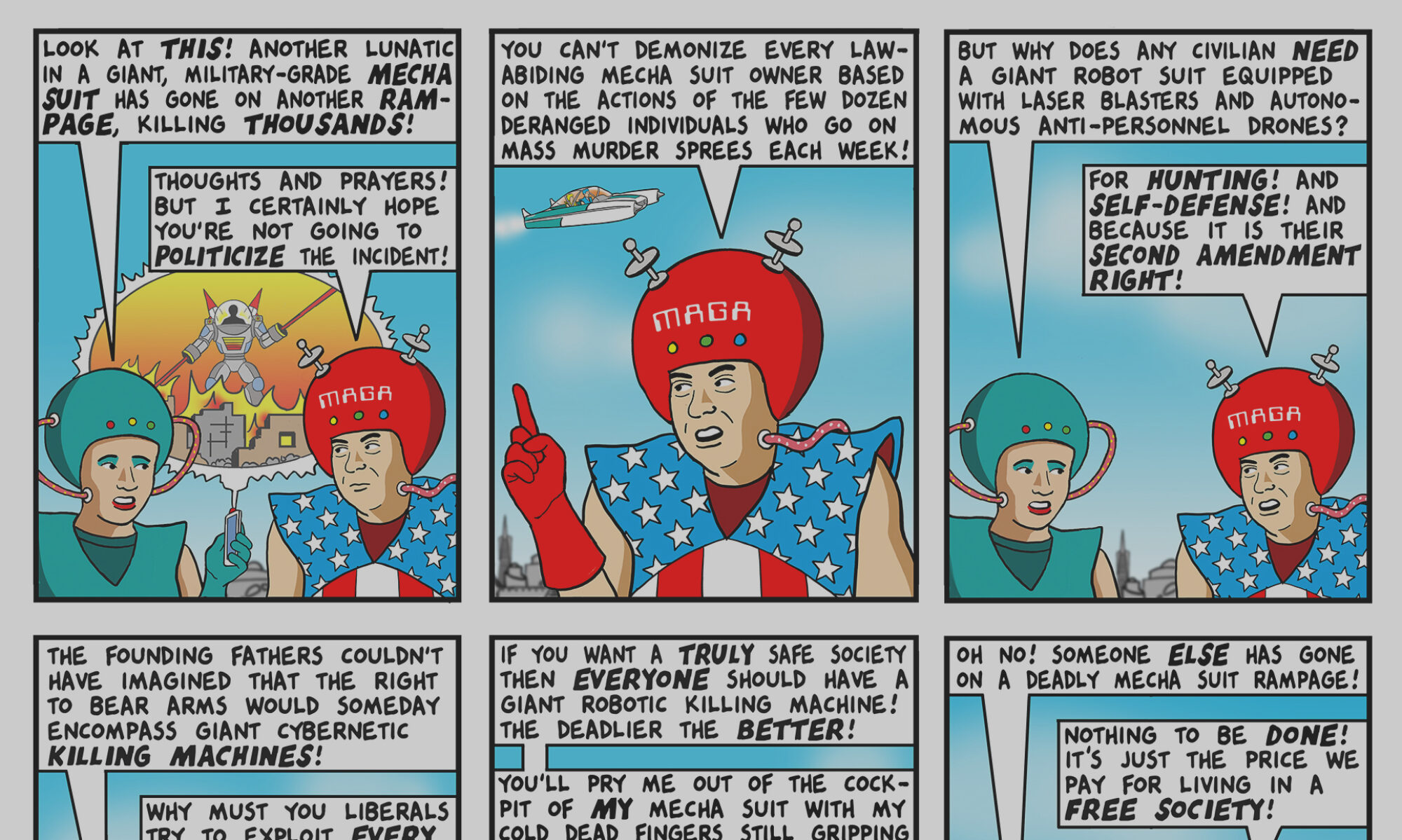Helpful responses to Baltimore
I’m not sure why I stopped posting links to new cartoons here on the site, but I’ll try to get back in the habit. Here’s the new one.
Charlie Hebdo and PEN
Michael Moynihan on the “newly minted French satire experts”:
There is no need to relitigate the main points in Charlie Hebdo’s defense. The context of those cartoons stupidly flagged as bigoted has been explained by a number of baffled French observers. And ask yourself: Should you trust the judgments of newly minted French satire experts, most of whom don’t speak French and have never held a copy of the newspaper? Or should you trust Dominique Sopo, the Togolese-French president of SOS-Racisme, France’s most celebrated anti-racism organization, who made the obvious point that Charlie Hebdo was the “most anti-racist newspaper†in the country? Those accusing his murdered friends of supporting the very things they so passionately opposed, Sopo said, were either motivated by “stupidity or intellectual dishonesty…Every week in Charlie Hebdo—every week—half of it was against racism, against anti-Semitism, against anti-Muslim hatred.â€
Indeed, the assumption, repeated ad nauseam since January, that the newspaper was “obsessed†with Islam was effectively rubbished by two French academics writing in Le Monde, who pointed out that in the last decade only seven of 523 covers Hebdo covers dealt with Islam. Twenty-one attacked Christianity. Having extensively reviewed the paper’s political content, they delivered a straightforward verdict: Charlie Hebdo was “undeniably an anti-racist†publication. And barely mentioned by either critics or supporters of the PEN decision was the small detail that when the shooting began, the Charlie Hebdo staff members were discussing their participation in an upcoming anti-racism conference.
And Adam Gopnick writing in the New Yorker:
But surely if some partisans had gone in and gunned down, say, the staff of the hideously anti-Semitic cartoon-heavy journal Der Stürmer back in the nineteen-thirties, well, one might have condemned the violence, but would one have honored those cartoonists? The right response here is that cartoons are not magic Rorschach blots. They speak just as lucidly as epigrams, and the actual content of Julius Streicher’s hideous cartoons of Jews was clear: they were not mocking Judaism; they were threatening the lives of Jewish people. “Your religion is ridiculous†is as different a message as can be from “You are a degenerated race, you want to rape our daughters and steal our goods, and we will do away with you.†An insult to an ideology is not the same as a threat made to a people. Nor does one in any sense, logical or historical, flow from the other—a truth we know exactly because the people most inclined to say that a religion is ridiculous are those who were brought up practicing it.
A few more thoughts below the fold.
Outlier
Michael Cavna at the Washington Post says I may be the biggest Pulitzer outlier (for cartooning, at least) in decades.
SOMETIMES, however rarely, the outlier manages to gain an inside track. And perhaps no first-time Pulitzer finalist has ever been more of an outlier than Dan Perkins …
In honoring editorial cartooning, the Pulitzer Prize Board has historically been a tradition-bound group. To the degree that whenever a name bobs up from beyond the mainstream, it feels like a breakthrough. In the category’s nine-decade past, in fact, you can count on two hands the number of winners who weren’t closely affiliated with a single mainstream newspaper, typically as a full-time staffer.
Earth Day memory
The metaphorical awards shelf here in the expansive world headquarters of Tomorrowco Industries has grown happily crowded over the years — the Pulitzer nod, the Herblock, a couple of RFKs, the Aaronsen, the Society of Illustrators medal, and a few others. But the first award I ever won for my art was on Earth Day, 1970, at Roosevelt Elementary School in Iowa City, Iowa. All the kids submitted designs for an Earth Day button, which would be copied off and distributed to the class. Mine won, mainly because it was the most colorful, but this was back before color xerox, let alone laser printers, and I remember wondering how the teachers were going to reproduce it without losing the vibrancy of the art. Since the teachers at Roosevelt Elementary School did not, in fact, have access to four-color printing technology, they traced it and ran it off on the school mimeograph ditto machine, and I can still remember the bitter disappointment of seeing my bright, colorful design reduced down to smudgy blue ink. It was my first taste of every print artist’s lifelong struggle with the tension between idea and execution, between original concept and reproduction technology. It’s a battle I’m still fighting 45 years later, every time I put out a book or anything else on dead tree media.
